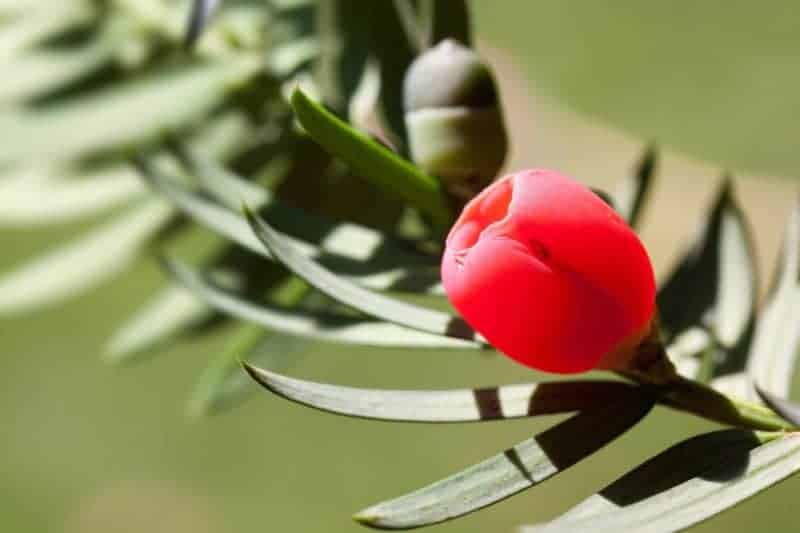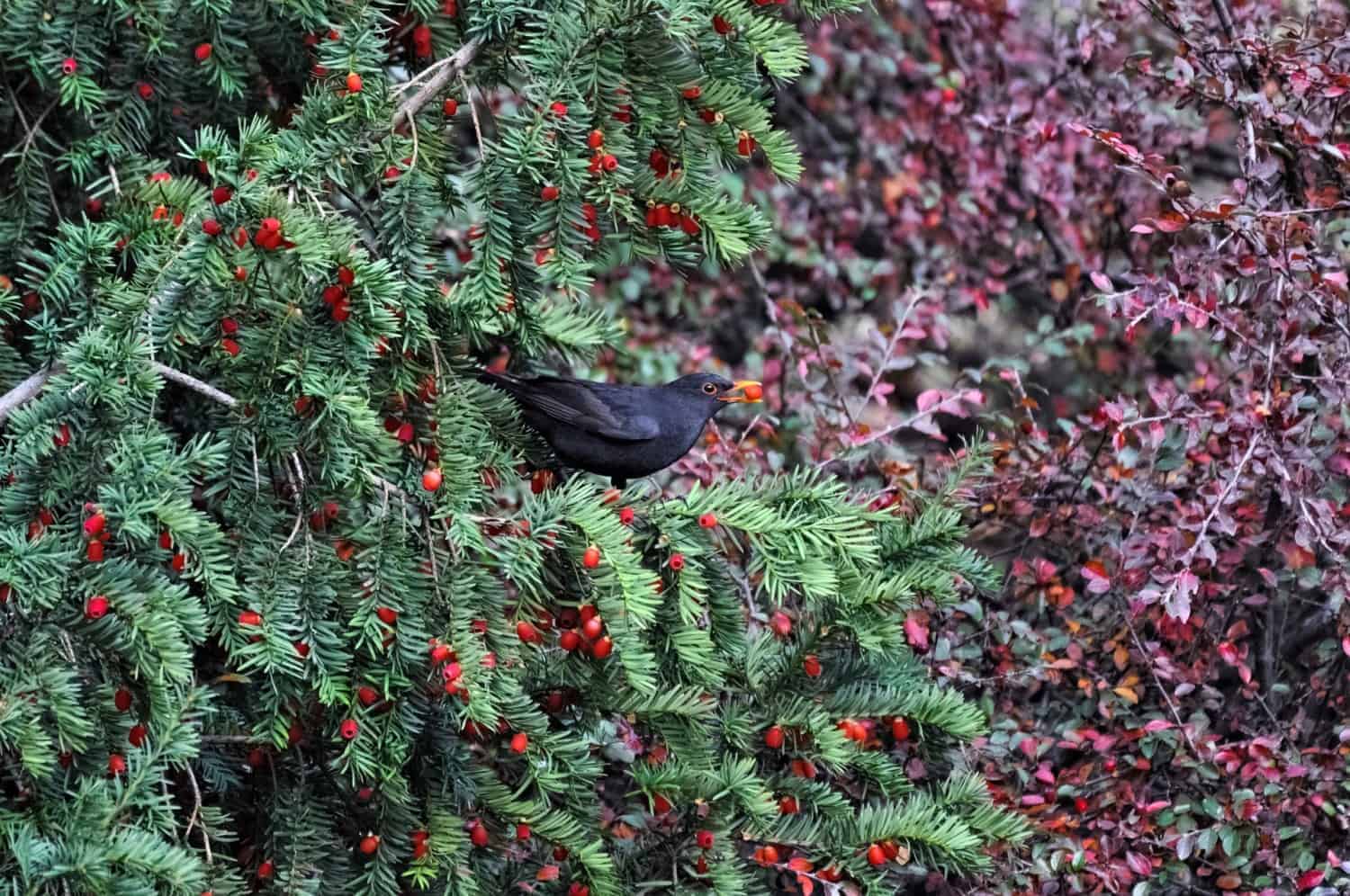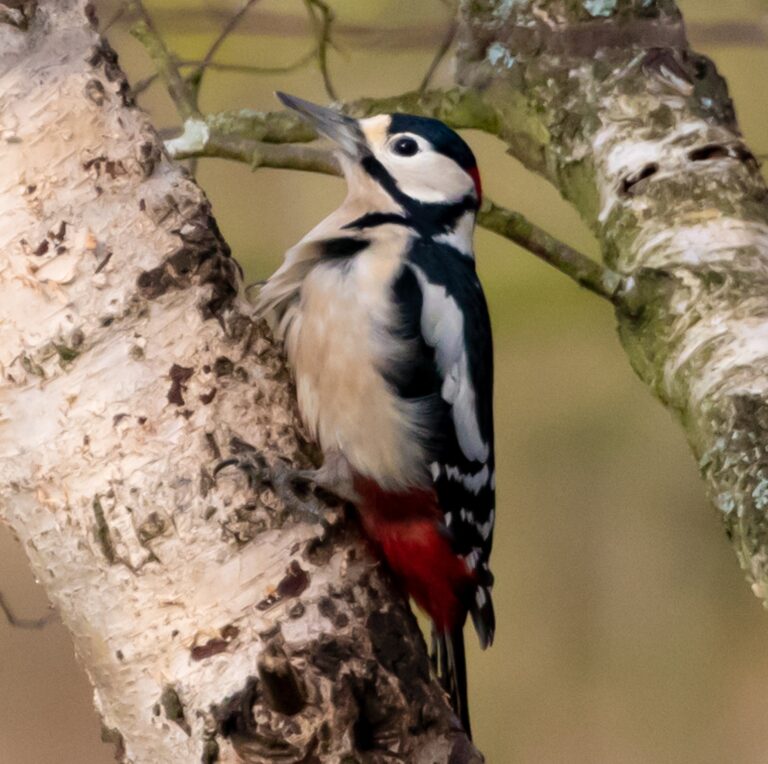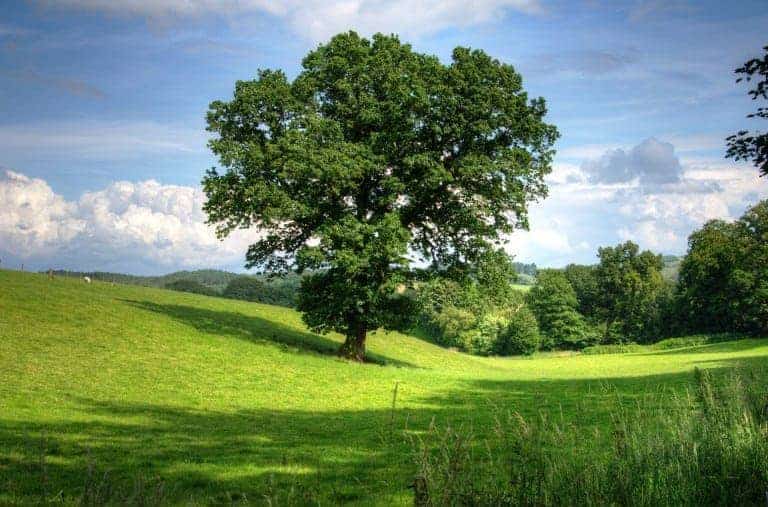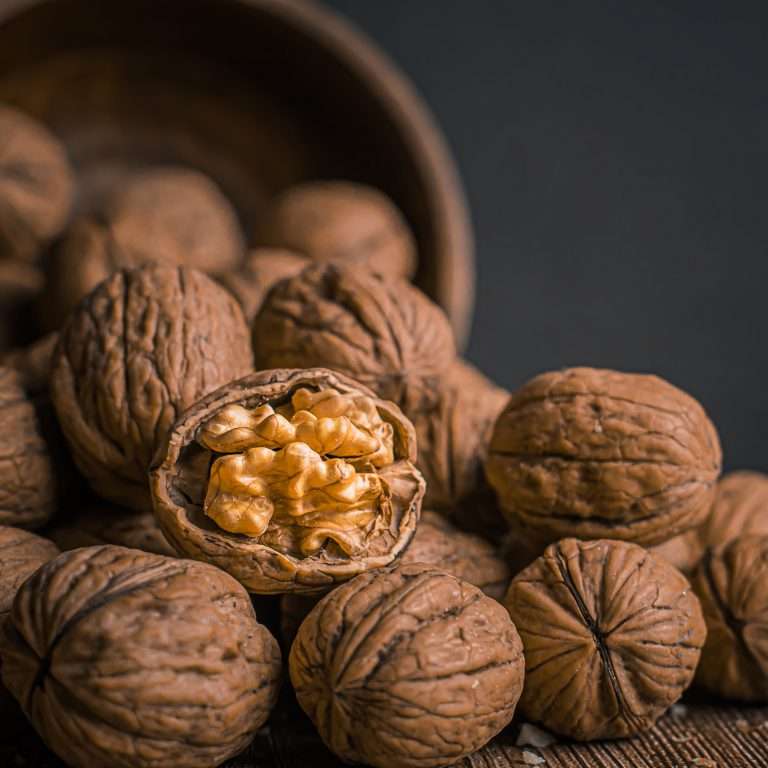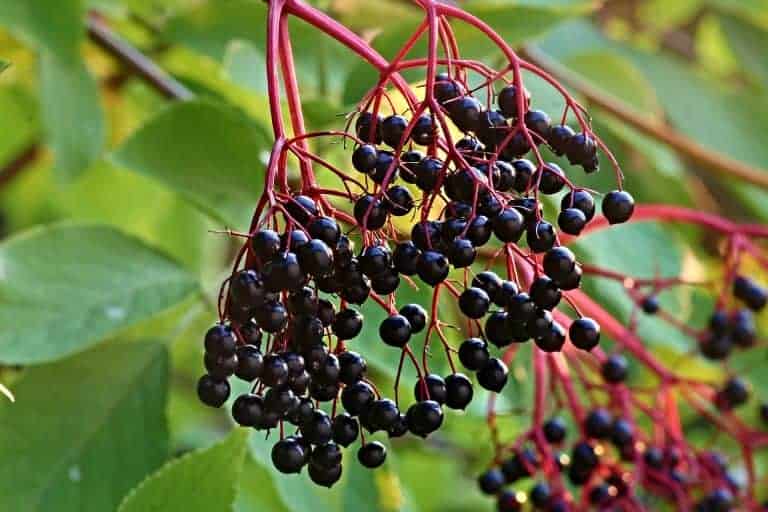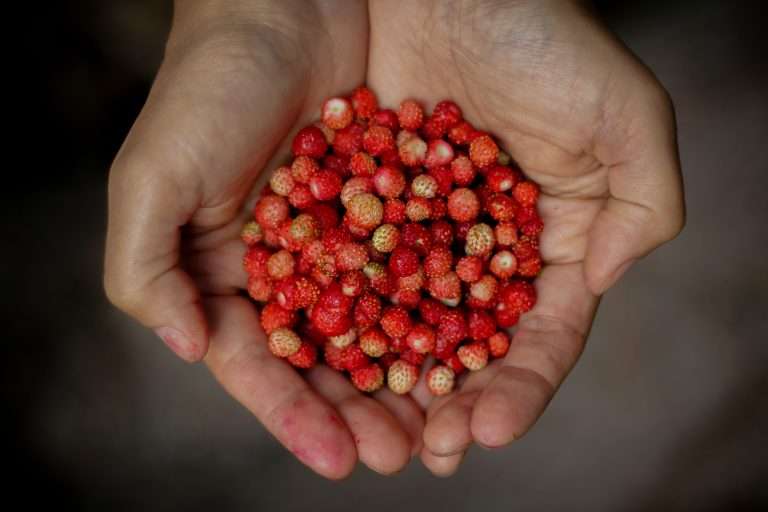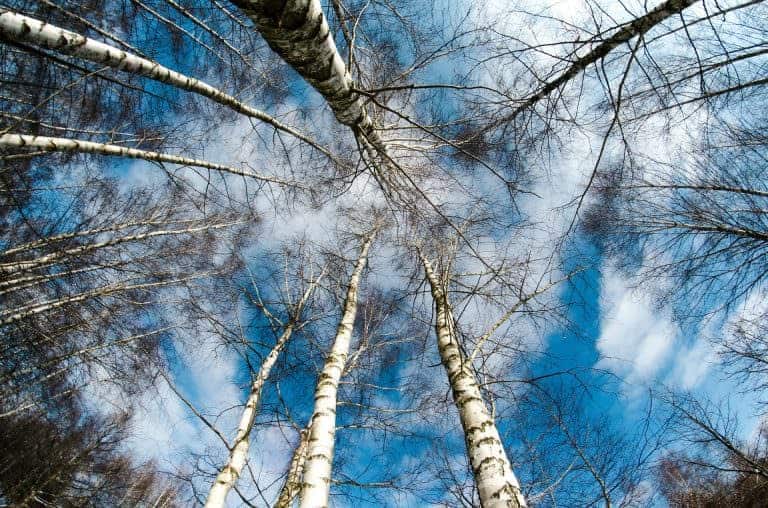Yew Tree (Taxus baccata)
Yew Tree (Taxus baccata)
The Yew tree is a long lived evergreen native to the UK. Reaching up to 20m at maturity this is deemed to be a medium tree which supports many species of wildlife whilst providing a dense understory or hedgerow.
This is said to be one of the longest lived trees in Europe, only deemed ancient once it has reached 900 years old. In fact there are believed to be 10 Yew trees in England dating back to the 10th Century.
The leaves of the Yew tree are short, straight needles with a pointed tip. These leaves grow in two rows either side of the twig. The leaves are dark green in colour on top with a greyish green colour underneath. The year round leaf colour makes for easier winter identification.
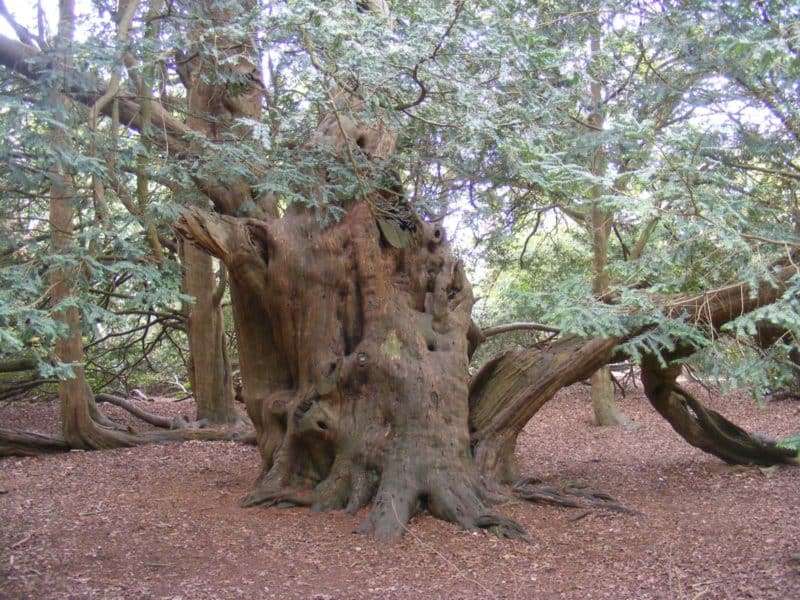 Yew tree bark is a distinctive reddish brown colour with purple tones. The heartwood of the tree ranges in colour from a deep brown-orange, a vibrant golden orange to a distinctive purple. As the heartwood makes contact with the air and is left to dry these colours become more visible and distinctive.
Yew tree bark is a distinctive reddish brown colour with purple tones. The heartwood of the tree ranges in colour from a deep brown-orange, a vibrant golden orange to a distinctive purple. As the heartwood makes contact with the air and is left to dry these colours become more visible and distinctive.
Yew trees are dioecious, meaning that the male and female flowers are found on separate trees, rather than being monoecious where both male and female flowers are present on the one tree. Monoecious trees are more common, probably because their chance of successful reproduction is far higher.
The flowers of the yew are seen from late February to April. The male flower is a small white globe like flower that becomes more yellow as its pollen content increases. The female flowers are also small, but are scaly and bud like in structure and are green when young and turning brown with age.
When mature and covered in pollen, the male flower releases his pollen which is carried by the wind to the female flowers on the other yew trees. Wind pollination can take place between trees that are miles apart as the tiny pollen particles travel easily in the air.
After the female flowers have been pollinated the fruit then forms on the female trees. This fruit bears the tree’s seed, each seed being enclosed in a red fleshy open ended berry. These berries are known as Arils.
As well as being a tree steeped in history, the Yew has many uses. The timber gathered from the yew tree is one of the strongest and most durable. In fact, one of the world’s oldest archaeological artefacts is a spear head made from yew, and is thought to be 450,000 years old. For this reason yew has traditionally been used for making tools and long bows.
Yew trees also provide great protection for many species of wildlife due to its dense structure. This not only protects against the weather and predators but provides lots of nesting opportunities for small mammals, such as squirrels and varying species of birds.
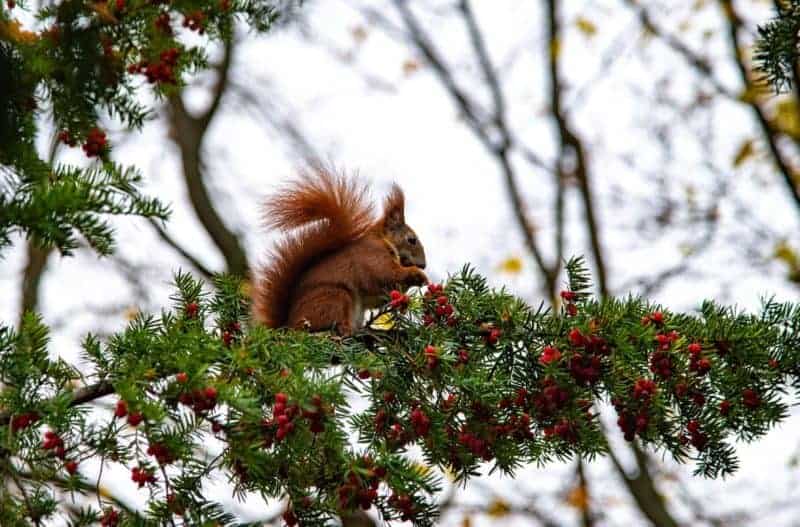 As well as providing a home, the yew also provides a food source with its fruit providing sustenance for squirrels, dormice and a few native birds who seem immune to its toxic properties. The only species known to be brave enough to consume the leaves are the Satin Beauty Moth’s Caterpillars.
As well as providing a home, the yew also provides a food source with its fruit providing sustenance for squirrels, dormice and a few native birds who seem immune to its toxic properties. The only species known to be brave enough to consume the leaves are the Satin Beauty Moth’s Caterpillars.
I mention about the bravery of this caterpillar as the yew tree is one of the most toxic trees where humans are concerned. Often associated with death and morbid connotations this tree has a grizzly reputation, and for good reasons.
The yew tree contains highly toxic taxane alkaloids, and each part of the tree is poisonous to humans. Eating just a few leaves can make a child critically ill, so ingestion should be avoided.
However, modern medicine has used this toxicity to our advantage, using the taxane alkaloids gained from the tree’s foliage in cancer fighting medication. These toxins are used in a form of chemotherapy, in closely monitored and controlled doses, to kill off the active cancer cells.
Along with its toxic reputation, the yew tree has often been seen as a symbol of death. It is thought that this is due to the large number of yew trees found in graveyards and church grounds across the UK. This is said to be because that Yew saplings were planted on the graves, or put in with the bodies, of plague victims to protect and purify the dead.
Another theory for the amount of yews found in graveyards is to protect the land. By planting yew trees in the church yards those with “commoner’s rights” were discouraged from grazing their livestock there as yew is also highly poisonous to livestock too.
Some accounts of mythology also state yew as a symbol of rebirth or resurrection, especially in the Celtic culture. It is thought that this is because of the tree’s ability to form new root systems and trunks. As low branches droop down and touch the ground they have the ability to root themselves from the end of that branch, then over time that branch becomes a new trunk.
So there we have it, the mighty Yew tree, one to be respected for both good and bad reasons. Respect and be mindful of its toxicity, but admire its strength, durability and and the incredible ages that many of them can reach providing a valuable habitat as well as a part of history too.
